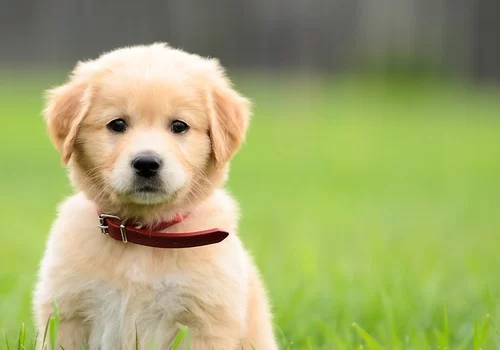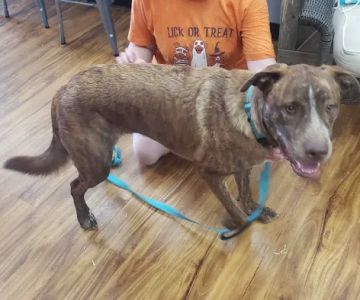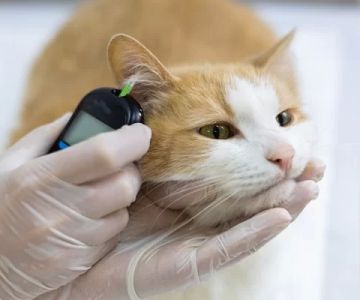How to Train Your Dog to Use the Bathroom Outside
When I first brought home my puppy, Max, I was excited but also a little overwhelmed by the responsibility of house training. One of the biggest challenges was teaching him to go to the bathroom outside. Max was a sweet dog, but like many puppies, he had no idea where he was supposed to do his business. I knew that housebreaking him was going to require patience, consistency, and a good plan. Over time, I developed a routine that not only helped Max understand where to go, but also turned the entire process into a bonding experience. If you're dealing with the same challenge, here’s what worked for us and how you can train your dog to use the bathroom outside effectively.
Understanding the Basics of Housebreaking
Before I started, I realized it was important to understand the fundamentals of housebreaking. Dogs, especially puppies, don’t naturally know where to go to the bathroom. It's up to us, as pet owners, to teach them the correct places. I started by reading about different methods and speaking with trainers to see what would work best for Max. I quickly learned that consistency was the key. Dogs thrive on routine, so the more predictable I made his bathroom schedule, the more likely he was to catch on quickly.
Another thing I learned was that dogs are creatures of habit. They prefer going to the bathroom in familiar spots, so it was important to establish a designated bathroom area outside. I also made sure to pay attention to Max's body language—he would often start sniffing around, pacing, or circling when he needed to go. Recognizing these signs early was crucial in preventing accidents inside the house.
Steps to Train Your Dog to Go Outside
With the basics in mind, I began Max's housebreaking training. Here’s a step-by-step approach that I found to be successful:
- Establish a Regular Bathroom Schedule: One of the first things I did was establish a regular schedule for Max. I took him outside first thing in the morning, after meals, before bedtime, and right after playtime. Dogs typically need to relieve themselves after waking up, eating, and exercising, so having a consistent schedule helped Max get used to the idea of going outside. It also helped me anticipate when he needed to go, which made it easier to avoid accidents inside.
- Pick a Specific Spot Outside: I quickly realized that dogs tend to prefer going to the bathroom in the same spot. I picked a quiet, consistent area of our yard for Max to go to every time. I would take him to that spot and praise him whenever he went. This helped him associate that particular area with doing his business. Over time, he got used to the idea and started going to the bathroom outside on his own.
- Use Positive Reinforcement: One of the most important lessons I learned was the power of positive reinforcement. After Max went to the bathroom outside, I immediately praised him with excitement and gave him a small treat. This helped him make the connection between going to the bathroom outside and receiving positive rewards. Dogs, like Max, are motivated by praise and food, so using both was incredibly effective in reinforcing the behavior.
- Supervise Indoors: I kept a close eye on Max while he was inside, especially during the early stages of housebreaking. If I noticed him starting to circle or sniff around, I immediately took him outside to his designated bathroom spot. The key here was being proactive. I also confined him to a small, safe area in the house when I wasn’t able to supervise him closely—this helped prevent accidents when I couldn’t be right there with him.
- Clean Accidents Properly: Accidents are bound to happen, especially in the beginning. When they did occur, I made sure to clean the area thoroughly with an enzymatic cleaner. This type of cleaner breaks down the smells that attract dogs to the same spot. I made sure to never scold Max for accidents, as this could cause confusion and fear. Instead, I focused on showing him what to do next time.
- Be Patient and Consistent: It’s important to remember that housebreaking takes time. Max didn’t learn overnight, and I had to be patient with him. There were setbacks, and sometimes I felt frustrated, but I knew that consistency was key. Every time Max successfully went outside, I praised him and made sure to maintain the routine. Eventually, he started to understand that going to the bathroom outside was the right behavior.
Dealing with Setbacks
During Max’s training, there were times when he had setbacks. I remember one afternoon when he seemed to regress and had several accidents in the house. It was easy to get discouraged, but I quickly reminded myself that setbacks are normal in the training process. The important thing is not to punish your dog but to stay calm and focused on the goal.
One thing I did during setbacks was to revisit the basics. I made sure I was sticking to the schedule, paying attention to his signs, and reinforcing the positive behaviors. Sometimes, a little extra effort and patience were all it took for Max to get back on track. As he got older, he gradually learned to hold his bladder for longer periods and became more reliable at going outside.
Signs Your Dog Needs to Go Outside
Part of successfully training your dog to use the bathroom outside is learning to recognize the signs that they need to go. For Max, I learned to look out for a few key behaviors:
- Sniffing or Circling: When Max started sniffing the ground or walking in circles, I knew it was time to get him outside quickly.
- Whining or Barking: If Max started whining or barking, it usually meant he was trying to get my attention to let him outside.
- Heading Toward the Door: Eventually, Max learned to walk over to the door when he needed to go. This was a huge milestone in his training.
Recognizing these signs early allowed me to get Max outside before any accidents happened, and it also helped him learn to communicate his needs effectively.
Gradual Transition to Full Independence
Once Max was reliably going to the bathroom outside, I gradually transitioned to giving him more freedom. I started leaving the door open for him so that he could go outside on his own when he needed to. As he matured and became more independent, he was able to go outside without needing constant supervision. It was a proud moment for me when Max started going to the door himself to ask to go outside. This was a clear sign that he had learned the routine and felt comfortable with it.
Conclusion
Training a dog to use the bathroom outside requires time, consistency, and patience, but the results are well worth the effort. By establishing a routine, providing positive reinforcement, and staying attentive to your dog’s signals, you can help them learn this essential behavior. Max and I had our challenges along the way, but by sticking with it, we were able to create a system that worked for both of us. If you’re in the process of training your dog, remember that every dog learns at their own pace. With persistence and love, your dog will soon understand where to go, making both your lives easier and more enjoyable.












